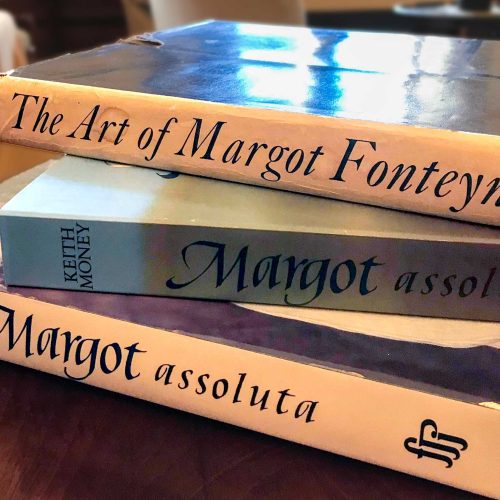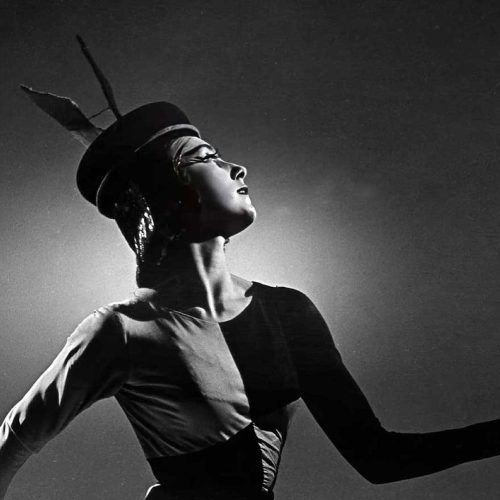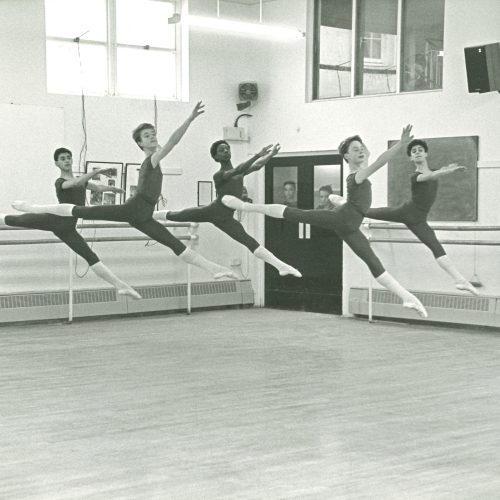Keith Money
Keith Money moved from loving and photographing horses to loving and photographing dancers (like Degas and his paintings). He flies in the face of convention and decided he wanted to see the nuts and bolts of a dancer’s life, so he pioneered an entirely different approach to ballet photography. In this podcast he explains to Patricia Linton how it was watching Margot Fonteyn and her artistry that first inspired him to work with ballet dancers. The interview is introduced by Tobias Round who is the son of dance photographer, Roy Round.
First published: September 23, 2025
Biography
Keith Money was born in New Zealand in 1935 and educated there. He received a Fine Art degree from the Elem School of Fine Art before setting off for the country of his English forbears. Gifted in four disciplines, writing, photography, and painting in oil and watercolour, he has written, painted and travelled extensively.
Initially a contributor and illustrator for a variety of equestrian publications, Money also wrote for national newspapers and journals. He then authored books of his own and published collections of his own extraordinary photographs, as well as painting in oils and watercolour. Throughout the 1960s, 1970s and 1980s he had both solo exhibitions and was included in many others. His work has given lasting pleasure. The nub of it all is his wonderful eye, whatever his subject, whether it is horses, dancers or skies; and it is this that will hold true for posterity.
Transcript
in conversation with Patricia Linton
Keith Money: I was terribly involved in the horsey world and doing a vast amount of journalism, you know. I did all the photographs; I did books about show jumping.
At one point, there was a publisher’s meeting in London, and they’d just had a kind of success with the one I’d just done – I think I’d just come back from the Olympic Games, where it had been terribly interesting, because I never stopped drawing and sketching, and painting. So, we had this meeting, and they said, ‘Oh gee, that’s great, now when’s your next – now come on, what’s the next book?’ And from nowhere, I heard my voice saying, ‘Oh, well it’s going to be a book about The Royal Ballet’. The Americans said, ‘Oh gee, great, when can we see it?’ You know, ‘what’s the release date? Fantastic.’ My English publisher, after the Americans had gone off happily, he said, ‘What is all this? What is all this? I mean have you ever taken a photograph of dancers before?’ And I said, ‘No, but they’re just like horses.’
Patricia Linton: Did it turn out to be so?
Keith Money: Absolutely, the timing was exactly the same. I had seen a lot of everything. I mean I remember having to do drawings the first night of Ondine in 1958. It was for the Associated Press, or something, and I was teamed up with somebody who was doing the article, and we had to go and say hello to Dame Margot.
Then, the BBC did a little extract for Monitor or something, where they did a scene from Act II, and I was spending the weekend in somebody else’s house. I suddenly thought, ‘My God, my God, where’s my camera?’ And this was absurd, because it was, you know, a television set in the room, it was like a lovely little fuzzy Victorian lithograph. But anyway, I grabbed my camera. I pointed it to the screen, and just thought… I just had a tremendous compulsion that I had to try and record this. So, I did, I shot off 12 exposures, and it was on the basis of those 12 exposures that Bill Beresford, he was the press officer [of The Royal Ballet] said, ‘Oh well, yes I suppose we’ll let you.’
Something about Fonteyn’s timing totally meshed with my grid. Suppose it had been A N Other, as the ballerina that night, on the television, I might have missed everyone, and that would have been the end of that, but it was Madam M F!
I don’t know, I mean I could make it work, I could just grit my teeth and make it work, but there might be a dancer whom just because it’s me, I mean the next photographer is going to take glorious pictures of Miss Whoever, or Whatever, but I… it doesn’t kind of work for me.
Patricia Linton: What did you want to do with your pictures?
Keith Money: Initially, I wanted just to tell people who didn’t know whether they wanted to go to ballet, that in fact ballet was not something you had to get in a muck sweat about, that there was a very interesting story being presented, and there was a dramatic content, and this is how it unfolded, making these shapes, and if you look along 20 or 30 things, you’ll get an idea of the fact that the story comes out the other end, and they lived happily ever after, or they didn’t. And I don’t know whether I formulated it very clearly, but I know that I wanted… I wanted to present the effort that went into making the whole. So, I couldn’t just have one glamorous, pretty picture, I had… I mean, when I started that, I mean it was almost unheard of that you should have a book half full of people in leg warmers, I mean it was… it was the shock and the horror, I mean, gosh we’re going to have a rehearsal, but I mean I haven’t got my costume on. Oooh God!’ I said. ‘Look,’ you know, ‘this is the bulk of what you do in your life, and it’s… I mean does it have any validity for you? Yes, OK, you’ve got leg warmers on, but does it mean something to you, this… you know, this afternoon, and you haven’t had lunch, and it’s two o’clock, and why are you doing it?’
I just endlessly wanted to see how they put the nuts and bolts together. The one I had least trouble with, which everybody said was going to be the nightmare, was Margot Fonteyn. I won her over, actually, by showing her a picture of Lynn Seymour and Christopher Gable, and she was dreading having to look at it, because she thought it was a picture of her, and when she realised it wasn’t a picture of her, she said, ‘Ah, that’s so beautiful.’
It’s a very dangerous thing to say one has favourites, but on the other hand, you can’t stop yourself warming to certain performance, because everybody responds to, you know, if you go to Crufts and look at a line of Poodles, I mean you’re going to like one Poodle and not another Poodle…
Patricia Linton: What sort of things did you warm to?
Keith Money: There would be certain dancers who move to the music, or the piano, as it is being played, in a way that seems exactly centred for me, that what they are doing fits. I can’t… you know that I couldn’t move them to the left, or the right, or up, or down, or later, or more ahead, or 100th of a second one way or the other way, but no, that’s where it is.
And I would respond therefore to that, initially, then on top of that I would become interested, I suppose, in the dramatic understanding of the dancer, in terms of what the presentation was, or the storyline, or the character, or whatever, if it wasn’t an abstract ballet, but then, you know, there’s always a story, even in an abstract ballet. But that, I would respond to from an obvious interest in theatre.
I must say that I was incredibly lucky, when I was starting to do that work, I initially started with the first performances of Marguerite and Armand, and the dress rehearsal, and in that I was having to draw it as well. So, I… to some extent, the photograph was secondary to the drawing, although I did quite a number of photographs of that. The top company then went off to America, for the spring tour, and I then moved over to start doing pictures with the… what was then known as ‘Touring’, or ‘Second’ company, which had come into town. At that point, they were doing a revival of Sylvia, which had not been seen for a number of years, which was a very big undertaking, because as you know, it’s a huge pan Technicon of a ballet.
We’re June 1963, and the leading roles were Doreen Wells doing Margot’s role of Sylvia, and Christopher Gable doing Michael’s [Somes] original role of Aminta, and so I was working a lot on the rehearsals of that, and the one thing that I was struck by immediately was that in the contact sheets of the photographs that I was taking, everywhere there was one person that kind of worked. I wasn’t particularly aware of what was happening until… dancers would look at the contact sheets, and then they might say, ‘Oh, we’ve never seen Christopher look like this before.’
Well, I… it didn’t mean anything to me, because I didn’t know what had been done, or not done with this young dancer, but I mean as far as I was concerned, everything was marvellous. I mean he looked marvellous, I mean he had a wonderful quality of movement, his musicality was fantastic, and it’s everything that a photographer would need if you’re trying to sell a story, because there was never a shot that he was not totally involved in the motivation of the character at that particular moment. And more, actually, from my point of view, he was probably the only dancer in the company who never looked at himself in the mirror, which was a fantastic plus, because you can’t admire yourself in the mirror and be totally involved in what you’re doing at the same time, although I totally understand why dancers do it, to correct their line, but some reason, Christopher didn’t, or wouldn’t.
Having said that, I would have to say also that he had astonishingly beautiful line, I mean just beautiful line, endlessly adapted to the form, or the music of the moment. I mean, endless, endless variations, and depending on what the part… what the dancer… whoever he was dancing with, whatever the girl did, he did something that accommodated her line, and if it was a different partner, then something else happened. He worked through the partner to get at the audience, he was not doing a direct presentation outwards. And from a photographer’s point of view, this is pure gold.
I mean we sort of fenced around the whole subject for a while, and people said, you know, ‘Why is he concentrating on Christopher, what’s going on?’ And it wasn’t anything other than… if you’ve got somebody in front of you, who is really wonderfully attuned to what they’re doing, you’d be a complete nincompoop not to photograph it. I mean just thinking about it, I kind of get goose bumps, because it’s… I mean it’s a long, long time ago, but I can’t not see it, and actually I can’t not feel it.
Patricia Linton: I mean do you feel a sort of sense of responsibility? You can’t have known it at the time, that these photographs were going to be so important?
Keith Money: No, I mean I didn’t… I mean I don’t know whether they are important or not important at all, but I do know that when I was doing it, there were a lot of people saying, ‘Oh what’s he doing, and why’s he always there?’ And you know, ‘Oh God, not Keith Money again,’ dah dah dah, you know my whole ambition was just to kind of absolutely fade into the background and not be there. I could only achieve that if I was there all the time, I mean you can’t just be a photographer for the Daily Express and turn up twice a year, because then you’re going to be noticed every inch of the way, and people will be doing something because they think you want that. I mean they will be aware of you, and it’s only somebody like myself, who says, ‘Alright, OK, fine, I’m just going to give the whole year to this thing, or two years, or whatever.’ You just kind of fit into the background.
As for the import of it…? I mean it was hard for me, there were times when I was exhausted, I was sick of the fighting, and this, and that, and the other, and dah, dah, dah, dah, but I just knew that it… I knew that it was important for me to save it. I didn’t think far enough ahead to think that anybody else would get any buzz from these things, a generation or more later. And if they do, I’m delighted.
The transcript of this podcast may have been lightly edited for ease of reading.




